Gentacol Eye Drops 10 ml

₹36.9*
MRP ₹41
10% off
₹34.85*
MRP ₹41
15% CB
₹6.15 cashback(15%)
Free Delivery
With Circle membership
(Inclusive of all Taxes)
This offer price is valid on orders above ₹800. Apply coupon PHARMA10/PHARMA18 (excluding restricted items)
Provide Delivery Location
Online payment accepted
 Prescription drug
Prescription drugWhats That
Composition :
Manufacturer/Marketer :
Consume Type :
Return Policy :
Expires on or after :
About Gentacol Eye Drops
Gentacol Eye Drops is used to treat bacterial infections of the eye and the skin around the eyes (eyelids). It is used to treat infections like conjunctivitis (inflammation of the mucous membrane (conjunctiva) of the eye), keratitis (inflammation of the cornea), keratoconjunctivitis (inflammation of conjunctiva and cornea), blepharitis (inflammation of the eyelids), blepharoconjunctivitis (inflammation of conjunctiva and eyelids), and corneal ulcers. Bacterial infection occurs when bacteria invade and multiply in the body.
Gentacol Eye Drops is composed of Gentamicin, an aminoglycoside antibiotic. It prevents bacteria from synthesising essential proteins required to carry out vital functions. It has broad-spectrum activity against aerobic gram-positive and gram-negative bacteria.
Gentacol Eye Drops is for ophthalmic (for the eye) use only. Common side effects of Gentacol Eye Drops include eye redness, burning or a stinging sensation at the application site, and temporary blurred vision. These side effects may not occur in every patient using this medication and differ individually. If the side effects persist longer or worsen, please seek a doctor's advice.
Let your doctor know if you are allergic to Gentacol Eye Drops or any other medications. Avoid contact of the dispensing tube tip with the eye, eyelids, fingers, and other surfaces to prevent contamination. Pregnant and breastfeeding women should consult their doctor before starting Gentacol Eye Drops. This medicine may cause temporary blurred vision; hence drive only when you are alert and have clear vision. Gentacol Eye Drops should be used in children only when advised by a doctor.
Uses of Gentacol Eye Drops
Directions for Use
Medicinal Benefits
Gentacol Eye Drops is used to treat various bacterial infections of the eye and the skin around the eyes (eyelids). Gentacol Eye Drops consists of Gentamicin, an antibiotic that prevents the synthesis of essential proteins required by bacteria to carry out vital functions.
Storage
Side Effects of Gentacol Eye Drops
- Redness of the eye
- Stinging/burning sensation
- Temporary blurred vision
Drug Warnings
Inform your doctor if you are allergic to any of the components in Gentacol Eye Drops or if you have a medical history of allergic reactions to medicines. Avoid touching the tip of the tube with bare hands or taking it closer to the eyelids while using ointment since it may cause contamination. If you wear contact lenses, remove them while administering the medicine into the eye. It is advised to check with your doctor before using Gentacol Eye Drops if you are pregnant or breastfeeding. Avoid driving or operating machines until you have a clear vision since the administration of Gentacol Eye Drops may cause temporary blurred vision.
Drug-Drug Interactions
Drug-Drug Interactions
Login/Sign Up
Co-administration of Mivacurium with Gentacol Eye Drops 10 ml can make it more effective as a therapy.
How to manage the interaction:
Taking Gentacol Eye Drops 10 ml with Mivacurium chloride together can possibly result in an interaction, but it can be taken if a doctor has advised it. If you have trouble breathing or feel like you can't breathe at all, it's important to contact a doctor right away. This is especially true if you're having difficulty breathing for a long time. Do not stop using any medications without talking to a doctor.
Taking Gentacol Eye Drops 10 ml with cidofovir can increase the risk of kidney problems.
How to manage the interaction:
Although taking Gentacol Eye Drops 10 ml and cidofovir together can possibly cause an interaction, it can be taken if your doctor has suggested it. However, if you experience nausea, vomiting, loss of appetite, increased or decreased urination, sudden weight gain or loss, fluid retention, swelling, shortness of breath, muscle cramps, tiredness, weakness, dizziness, confusion, or an irregular heart rhythm, consult a doctor. Do not discontinue any medications without consulting a doctor.
Taking Deferasirox may cause kidney problems and combining it with Gentacol Eye Drops 10 ml may increase that risk.
How to manage the interaction:
Although there is a possible interaction, Gentacol Eye Drops 10 ml can be taken with deferasirox if prescribed by the doctor. Consult the doctor if you experience signs and symptoms of kidney damage such as nausea, vomiting, loss of appetite, increased or decreased urination, fluid retention, swelling, shortness of breath, bone pain, muscle cramps, tiredness, weakness, dizziness, confusion, and irregular heart rhythm. Dehydration can also harm the kidney, therefore drink plenty of fluids if you develop diarrhoea or vomiting during treatment with these medications.
Co-administration of Gentacol Eye Drops 10 ml and Temsirolimus may increase the risk of kidney problems.
How to manage the interaction:
Co-administration of Gentacol Eye Drops 10 ml with Temsirolimus can possibly result in an interaction, but it can be taken if a doctor has advised it. It's important to keep an eye on how much you pee. If you notice any changes like peeing more or less than usual, it's a good idea to let your doctor know right away. Some signs to watch out for include gaining weight quickly, feeling bloated, having trouble breathing, or feeling sick to your stomach. Other symptoms to be aware of are not feeling hungry, losing weight, swelling, muscle cramps, feeling weak or dizzy, feeling confused, or having an irregular heartbeat. Do not stop using any medications without a doctor's advice.
Co-administration of Tenofovir alafenamide may cause kidney problems and combining it Gentacol Eye Drops 10 ml may increase that risk.
How to manage the interaction:
Although there is a possible interaction, Gentacol Eye Drops 10 ml can be taken with tenofovir alafenamide if prescribed by the doctor. Consult the doctor if you experience signs and symptoms of kidney damage such as nausea, vomiting, loss of appetite, increased or decreased urination, sudden weight gain or weight loss, fluid retention, swelling, shortness of breath, bone pain, muscle cramps, tiredness, weakness, dizziness, confusion, and irregular heart rhythm. Do not stop using any medications without consulting a doctor.
Everolimus may cause kidney problems, and combining it with Gentacol Eye Drops 10 ml may increase that risk.
How to manage the interaction:
Although there is a possible interaction, Gentacol Eye Drops 10 ml can be taken with everolimus if prescribed by the doctor. Consult the doctor if you experience symptoms of kidney damage such as nausea, vomiting, loss of appetite, increased or decreased urination, sudden weight gain or weight loss, fluid retention, swelling, shortness of breath, muscle cramps, tiredness, weakness, dizziness, confusion, and irregular heart rhythm.
Taking tacrolimus with Gentacol Eye Drops 10 ml may cause kidney problems.
How to manage the interaction:
Although there is a possible interaction, Gentacol Eye Drops 10 ml can be taken with tacrolimus if prescribed by the doctor. However, consult the doctor if you experience symptoms of kidney damage such as nausea, vomiting, loss of hunger, increased or decreased urination, sudden weight gain or weight loss, fluid retention, swelling, shortness of breath, muscle cramps, tiredness, weakness, dizziness, confusion, and irregular heart rhythm. Do not discontinue any medications without consulting a doctor.
Co-administration of Vecuronium with Gentacol Eye Drops 10 ml can make the treatment more effective.
How to manage the interaction:
Taking Vecuronium with Gentacol Eye Drops 10 ml together can possibly result in an interaction, but it can be taken if a doctor has advised it. If you have any of these symptoms - having trouble breathing or feeling like you can't catch your breath for a long time - it's important to call a doctor right away. Do not stop using any medications without a doctor's advice.
Co-administration of Pipecuronium bromide with Gentacol Eye Drops 10 ml may increase the risk or severity of side effects.
How to manage the interaction:
There may be a possibility of interaction between Gentacol Eye Drops 10 ml and Pipecuronium bromide, but it can be taken if prescribed by a doctor. If you have trouble breathing or feel like you can't breathe at all, it's important to contact your doctor right away. This is especially true if you're having difficulty breathing for a long time. Do not stop using any medications without a doctor's advice.
Co-administration of Gentacol Eye Drops 10 ml with Foscarnet can increase the risk of kidney damage.
How to manage the interaction:
Although taking Gentacol Eye Drops 10 ml and Foscarnet together can evidently cause an interaction, it can be taken if a doctor has suggested it. If you have any of these symptoms, it's important to contact your doctor right away: seizures, an irregular heart rhythm, feeling sick, swelling, sudden weight gain or loss, severe pain in your upper stomach, strong heartbeats, feeling dizzy, or chest pain. Do not stop using any medications without a doctor's advice.
Drug-Food Interactions
Drug-Food Interactions
Login/Sign Up
Diet & Lifestyle Advise
- Manage stress, eat healthily, drink plenty of water, exercise regularly, and get plenty of sleep.
- Eat food rich in antioxidants such as berries, spinach, kidney beans, dark chocolate, etc.
- Know your allergy triggers, such as pollen, dust and other factors.
- Do not rub your eyes even though some ophthalmic drugs make your eye itchy.
- If you wear contact lenses: Clean and replace contact lenses more often. Never share contact lenses. Always wash your hands before inserting and removing the contact lens.
- Avoid staring at the digital screens for longer durations. Rest your eyes every 20 minutes.
- Avoid or limit the intake of alcohol and caffeine.
Habit Forming
Therapeutic Class
Gentacol Eye Drops Substitute

Supragent Lotion 30 ml
by AYUR
₹2.25per tabletDermycin Cream 20 gm
by Others
₹0.58per tabletEldegenta Eye Drop
by Others
₹3.47per tabletGerocin Dps Eye Drop
by Others
₹1.20per tabletGentarid Eye/Ear Drops 10 ml
by Others
₹3.24per tablet
Product Substitutes
Author Details
We provide you with authentic, trustworthy and relevant information
Drug-Diseases Interactions
Drug-Diseases Interactions
Login/Sign Up
Adequate hydration is critical for reducing the risk of oto- and nephrotoxicity associated with aminoglycoside usage. Dehydration should preferably be treated before starting therapy. Fluid status should be continuously maintained in patients who are at risk of dehydration, such as those who have severe and/or prolonged diarrhoea or vomiting. If indications of renal irritation appear during therapy, hydration should be increased as directed, followed by a dose reduction if necessary. If urine flow gradually decreases or azotemia worsens, therapy should be discontinued.
How to manage the interaction:
Dehydration should be corrected prior to initiation of therapy. Fluid status should be monitored closely in patients who may be at risk for dehydration, such as those with severe and/or prolonged diarrhea or vomiting. Therapy should be withdrawn if urinary output decreases progressively or azotemia (elevated levels of urea) increases.
Aminoglycosides can elicit dose-related neuromuscular blockade and muscle weakness, especially in patients with neuromuscular illness or hypocalcemia, as well as in those undergoing general anaesthesia, neuromuscular blocking medications, or substantial transfusions of citrate-anticoagulated blood. Although neuromuscular blockade caused by aminoglycosides is usually self-limiting, it can occasionally result in respiratory paralysis. The most potent neuromuscular blocking drug in the class is regarded to be neomycin. However, the risk is greatest with large dosages instilled intraperitoneally or intrapleurally, or with fast intravenous administration of parenteral aminoglycosides. In patients with neuromuscular problems (e.g., myasthenia gravis, parkinsonian syndrome, botulism) or hypocalcemia, aminoglycoside therapy should be used with caution. If indications of respiratory paralysis appear during aminoglycoside therapy, the medicine should be stopped and, if necessary, mechanical breathing assistance administered.
How to manage the interaction:
Therapy should be administered cautiously in patients with neuromuscular disorders (e.g., myasthenia gravis, Parkinsonian syndrome, botulism) or hypocalcemia (low calcium levels). The drug should be discontinued and mechanical respiratory assistance provided if needed if signs of respiratory paralysis occur during therapy.
Aminoglycosides can harm the eighth cranial nerve, causing vestibular and/or auditory toxicity. Dizziness, nystagmus, vertigo, ataxia, tinnitus, and varied degrees of hearing impairment are among the symptoms. Following the discontinuation of the medicine, permanent hearing loss, including whole or partial irreversible bilateral deafness, may occur. Therapy with aminoglycosides, especially if extended (> 10 days), should be used with caution in patients with preexisting vestibular and/or auditory impairment, as it may delay or obfuscate the diagnosis of a drug-induced ototoxic impact. Patients should be adequately hydrated, the usual aminoglycoside dosage should not be exceeded, use with other ototoxic agents should be avoided, and peak and trough serum aminoglycoside concentrations should be determined on a regular basis and dosage adjusted to maintain desired levels.
How to manage the interaction:
Therapy should be administered with caution in patients with ototoxicity. The dosage should be reduced or therapy shoule be withdrawn if signs and symptoms of toxicity develop.
Aminoglycosides have the potential to be ototoxic and nephrotoxic. Damage to the eighth cranial nerve can cause vestibular and/or auditory toxicities such as dizziness, nystagmus, vertigo, ataxia, tinnitus, and varied degrees of hearing impairment. Tubular necrosis, increases in BUN, nonprotein nitrogen, and serum creatinine concentration, decreases in urine specific gravity and creatinine clearance, proteinuria, and cells or casts in the urine are all signs of nephrotoxicity. Rarely, renal electrolyte wasting can cause hypocalcemia, hypomagnesemia, and hypokalemia, which can be accompanied with paresthesia, tetany, disorientation, and positive Chvostek and Trousseau symptoms. Although aminoglycoside-induced nephrotoxicity is often reversible after treatment withdrawal, mortality from uremia has happened on rare occasions. Patients with renal impairment should be treated with caution and at lower doses of aminoglycosides, as they may be at risk.Drug buildup increases the risk of oto- and nephrotoxicity. Patients should be adequately hydrated, the usual aminoglycoside dosage should not be exceeded, use with other neuro- and nephrotoxic agents should be avoided, and peak and trough serum aminoglycoside concentrations should be determined on a regular basis and dosage adjusted to maintain desired levels. If toxicity develops, renal and eighth cranial nerve function should be constantly monitored, and the dosage lowered or therapy discontinued.
How to manage the interaction:
Therapy should be administered cautiously at reduced dosages in patients with kidney impairment. Patients should be adequately hydrated, the dose should not be exceeded, and use with other neuro- and nephrotoxic agents should be avoided to minimize the risk of toxicity.
FAQs
Gentacol Eye Drops prevents the synthesis of essential proteins required by bacteria to carry out vital functions. Thus, it treats bacterial infections of the eye and its surrounding areas.
It is advised to remove your contact lens while using the eye ointment. Also, remember to wash your hands before and after using the ointment to avoid contamination.
If you use other eye medications along with Gentacol Eye Drops, it is advised to maintain a gap of at least 5-10 minutes after each administration. Also, use eye drops before applying any ointments.
Avoid the contact of the tip of the tube with fingers, eyes, and eyelids when using Gentacol Eye Drops. Topical eye products, when contaminated by patients with eye diseases, bacterial keratitis (an infection of the cornea) and ocular infections (eye infections) may occur, which result in vision loss.
Prolonged use of eye ointment can cause an overgrowth of other microorganisms like fungi and develop bacterial resistance.
Special Advise
- It is advised to contact your doctor if the infection symptoms persist or worsen after two weeks of treatment.
- If you experience any purulent (pus-containing) discharge or your inflammation and pain increase while using Gentacol Eye Drops, please discontinue the use and consult a doctor.
Disease/Condition Glossary
Bacterial eye infection: A bacterial eye infection occurs when bacteria invade any part of the eyeball or its surrounding tissues, including the cornea (clear front surface of the eye) and the conjunctiva (thin membrane lining the outer eye and inner eyelids). A bacterial eye infection symptoms include red eyes, pain, swelling of the eyes, watery eyes, itching, and blurry vision. Some very common eye infections are conjunctivitis (the inflammation and irritation of the eye's mucous membrane (conjunctiva), stye (bump on the eyelid), uveitis (inflammation of the uvea-middle layer of the eye), marginal keratitis (inflammation of the cornea), and blepharitis (inflammation of the eyelids).













